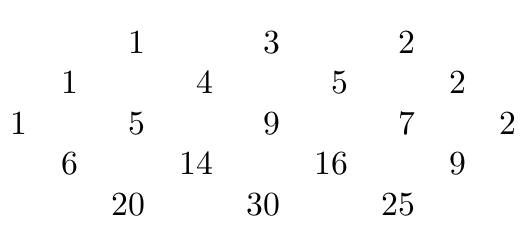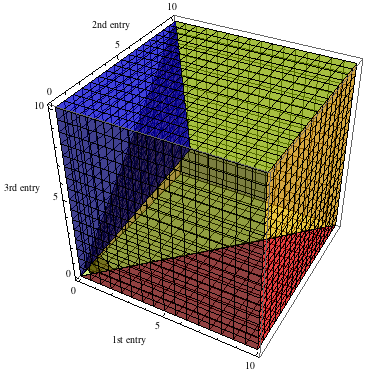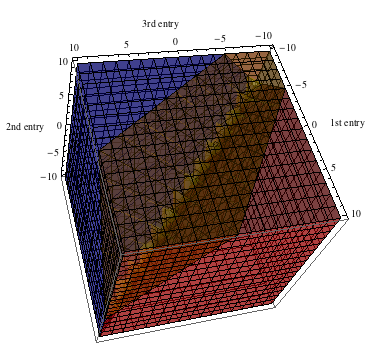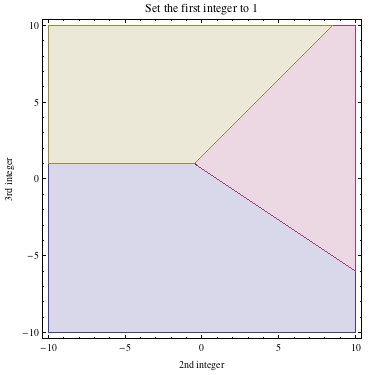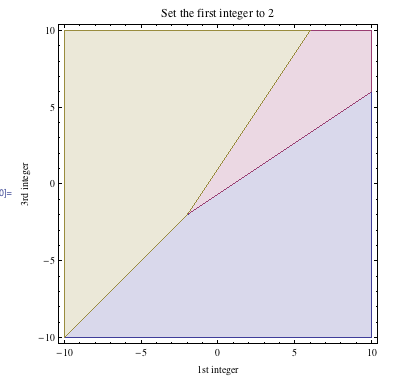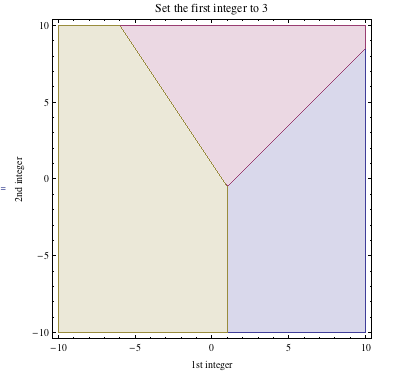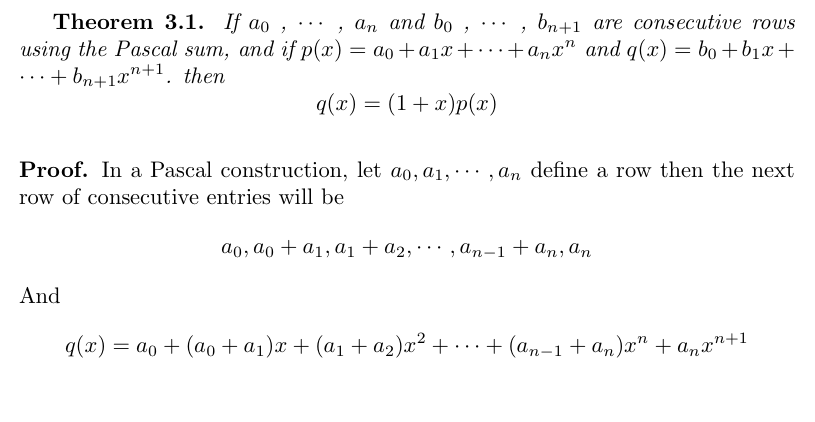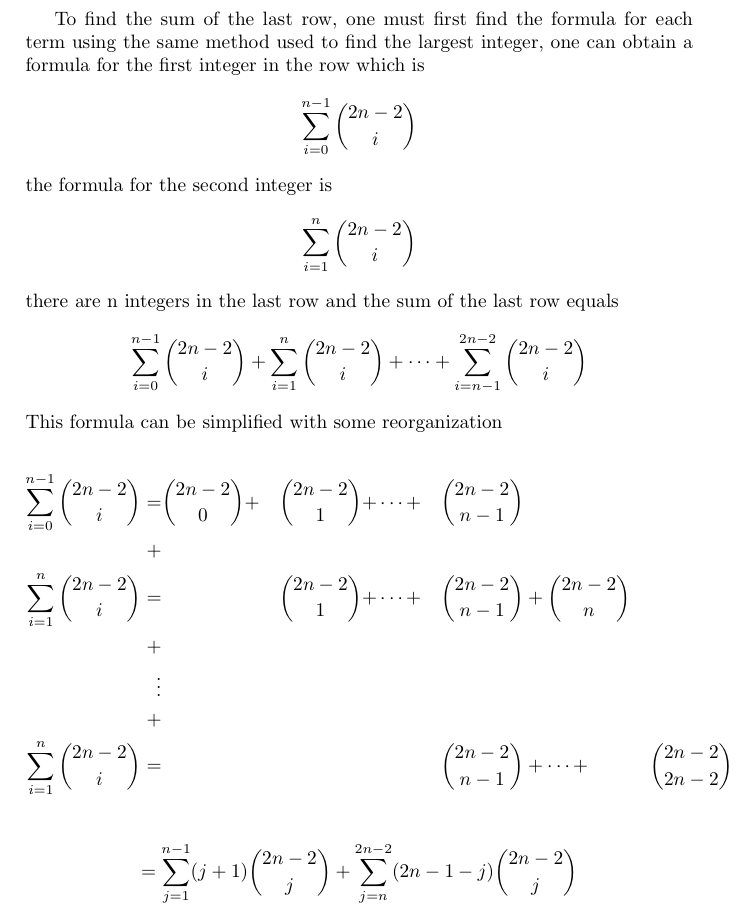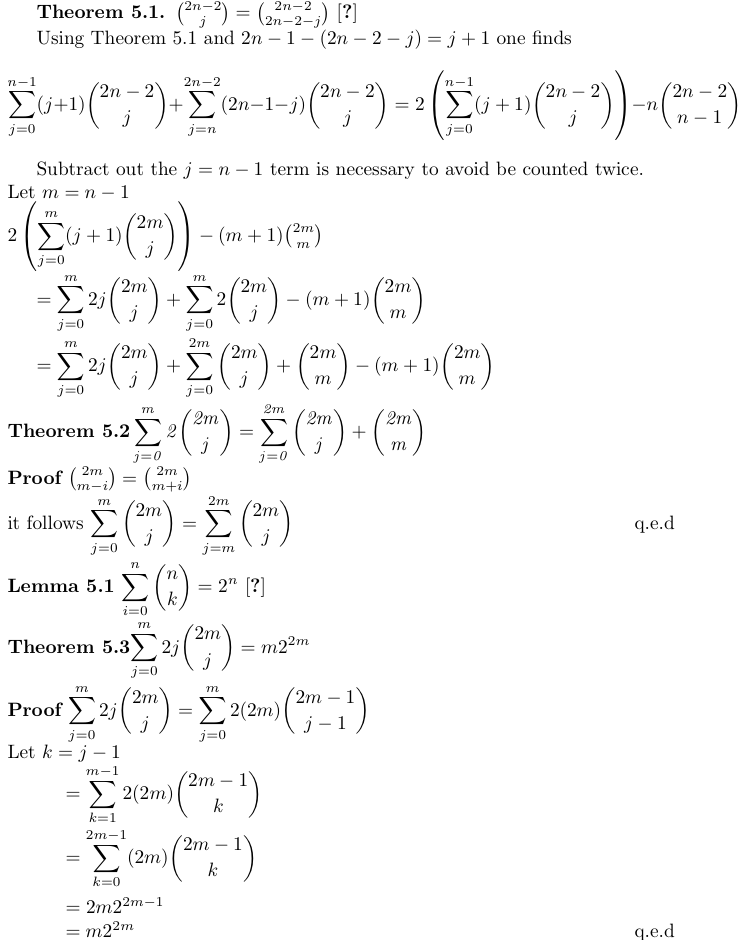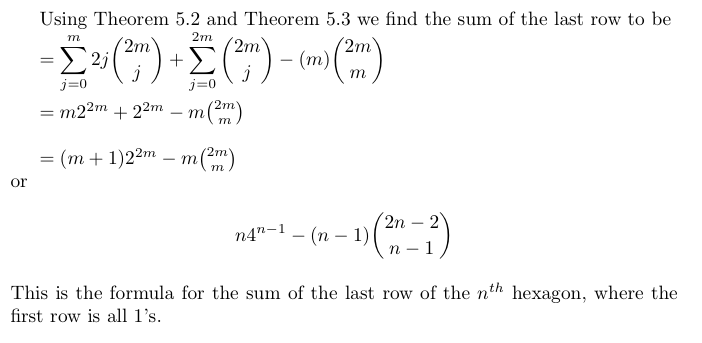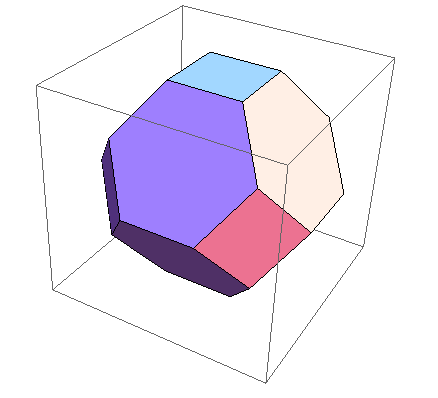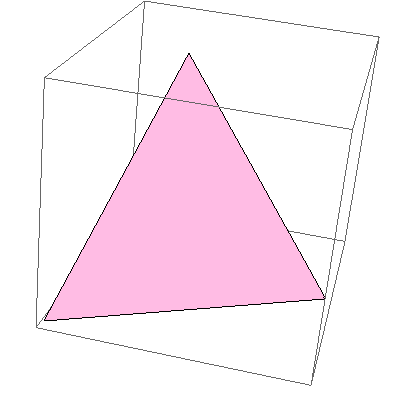Given a hexagon with an arbitrary first row,
What will be the value of the largest entry?
This is a graph I made to help solve the problem:
However the entries can also be negative
The red region is where the 1st number in the last row is the largest.
The yellow region is where the 2nd number in the last row is the largest.
The blue region is where the 3rd number in the last row is the largest.
Here are some 2D graphs
The purple region shows when the 1st integer of the last row is the largest.
The red region shows when the 2nd integer of the last row is the largest.
The yellow region shows when the 3nd integer of the last row is the largest.
Here are some rules of thumb:
If all the numbers in the first row are positive and the middle term is the largest, then the middle term in the last row is the largest.
If the first or last number is the largest than the corresponding number in the last row is the largest if the difference between it and the center number is greater than 3/2 the other number.
The question really has two parts:
What is a hexagon and how is on constructed?
A hexagon is constructed similar to a Pascal's Triangle, however the first row can consists of multiple integers instead of one.
1 1 1
1 2 2 1
\ 1 3 4 3 1/
(1) \ 4 7 7 4 / (1)
(1) (5)\ 11 14 11 / (5) (1)
To construct a hexagon with side length n, either:
-
Let the first row have n integers and construct a trapzoid with 2n-1 rows. Then omit the two triangles formed at the two lower corners.
or
-
Take an array of n integers and an entry in the next row is equal to the sum of the two entries above it. However, there is an implicit zero in front of the first n-1 rows, but not after. After n rows the hexagon begins to shrink until the row has n integers.
Specific Case
Before dealing with the general case, I focused on the case where the first row is made entirely of 1's
Examples
The Largest Number
In this case the largest number will always be the entry in the center of the last row. This solves the problem of determining which entry in the last row is the largest but we need a formula for that entry.
To find the formula for that we will need the following theorem:
Using this theorem, we are able to find the formula for the largest number
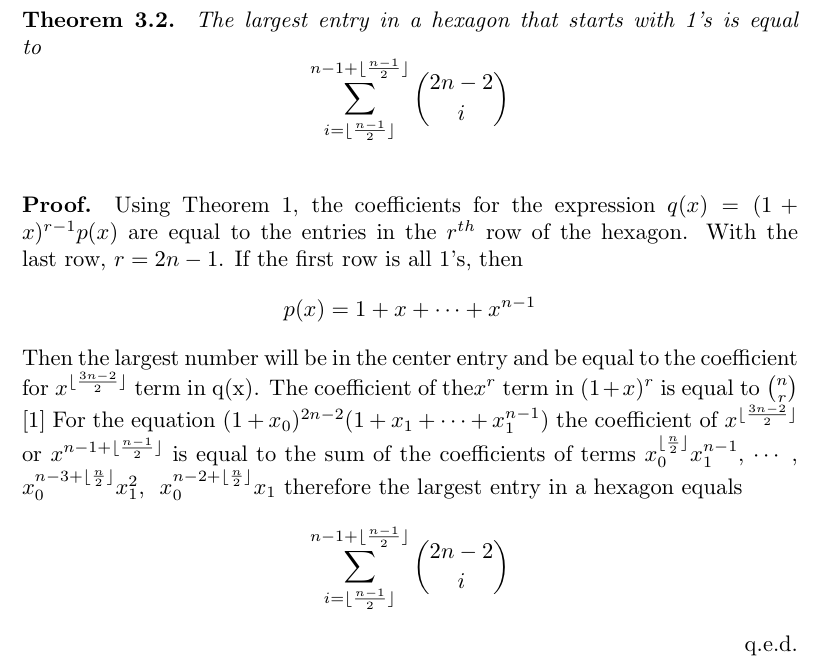
I found a formula but I was unable to find a recursion or a pattern for the sequence of the largest numbers. However, the numbers appear increase by a factor of four.
The graph shows that the function of the largest numbers is approximated by the function `y =.25*4_^x`.
Back to the General Case
Let the first row be a_0, …, a_n
Using what I learned from the case above I found the formula for the first number in the last row
And then the last row is equal to:
I also wanted to a find a formula for the last row of a Hexagon.
If the first row consists on n 1's then the formula for the sum is
The following is the proof:
From the hexagons I constructed another triangle

The rows of the triangle are the last rows of the hexagons. I have developed formulas so the triangle is self generating.
Entry = T(row number, entry number)
-
Finding recursive pattern for largest number
-
Find a more effective way to determine the largest number in the general case
-
Find new recursive patterns in the new triangle
-
Construct hexagons in 3D
I did find a formula for the largest number in the 3D space
`sum (2*n)! /(((i+j)!)*((j+k)!)*((k+i)!))` where `n=i+j+k`, `0<=i<=n` ,`0<=j<=n`, `0<=k<=n`
